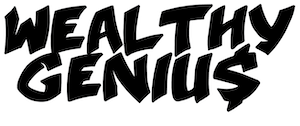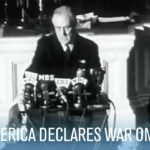How much is Rogers Hornsby worth?
| Net Worth: | $3 Million |
|---|---|
| Profession: | Professional Baseball Manager |
| Date of Birth: | April 27, 1896 |
| Country: | United States of America |
| Height: | 1.8 m |
About Rogers Hornsby
As Hornsby famously remarked, “I can’t remember anything that happened before I had a baseball in my hand.” Hornsby began playing baseball at a very young age. When he was 10 years old, he started working as a messenger boy for the Swift and Company meat processing plant. He also played fill-in infield for the baseball club there. He continued to play baseball for North Side High School through the tenth grade before quitting to take a full-time position at Swift.
- Born: April 27, 1896
- Hometown: Winters, Texas
- Born: Jan. 5, 1963
- Height: 5-11
- Weight: 175
- Bats: Right
- Throws: Right
- Family: Married three times; had a son and a daughter, one from each of his first two marriages
- Primary position: Second baseman
The Dallas Steers of the Texas League invited Rogers to try out. He was selected for the team but released without playing a single game two weeks later. He then agreed to become the shortstop for the Hugo Scouts of the Class D Texas-Oklahoma League for a monthly salary of $75 ($2,029 in today’s dollars). Halfway through the season, the team disbanded, and Hornsby’s contract was sold to the Denison Champions of the same league for $125 (about to $3,382 in today’s dollars).
In 1915, the Denison team adopted the moniker Railroaders, joined the Western Association, and increased Hornsby’s pay to $90 per month (equivalent to $2,411 today).
Ahead of the Bigs:
In 1914, Rogers received a test with the Dallas Steers of the Texas League thanks to Hornsby’s older brother Everett, a minor league player. Even though he made the team, he was let go after two weeks. Then, for $75 per month, he joined with the Class D Hugo Scouts of the Texas-Oklahoma League. However, the team folded midway through the season, and he only managed a.232 batting average.
He hit.277 while playing with Denison of the Western Association in 1915, which caught the St. Louis Cardinals’ attention. To assist bolster the roster of their financially precarious squad, they bought out his contract. On September 10, 1915, at the age of 18, the Cardinals summoned him up to the majors after coaches reconstructed his swing.
Professional Highlights:
He was the National League’s leading hitter seven times and batted more than.400 three times. He is regarded as one of the top right-handed hitters of all time and possibly the best second baseman in major league history.
won the Triple Crown in the National League twice, in 1922 and 1925.
was a career hitter who hit.358 but fell 70 hits short of 3,000 hits. In his final six seasons as a player-manager, Hornsby only managed 75 total hits despite appearing set to reach that threshold.
Hornsby had more than 200 hits seven times between 1920 and 1929, with his career high coming in 1922 when he had 250 hits and led the league in runs (141), doubles (46), home runs (42), RBI (152), batting average (.401), on-base percentage (.498), and slugging percentage (.722). During that season, he also had a 33-game hitting streak. He has the most home runs of any.400 hitter with 42.
At the age of 19, Hornsby played in 18 games and hit.246. The following 16 seasons saw him bat higher than.300 in 15 of them.
Hornsby began his career as a shortstop before being switched to second base in 1920, where he finished his playing days.
reached a career high.
The sixth-highest batting average in a season in MLB history was 424 in 1924. Additionally, he walked 89 times that season, which contributed to his.507 on-base percentage and 1.203 OPS.
surpassed that in 1925, the year he won his first MVP award, when he hit.403 with 39 home runs and 143 RBI and had a 1.245 OPS. age 29, also became player-manager for that season.
batted just.317 with 11 home runs in 1926, which was a poor season for him at the plate. But as player-manager, he guided the Cardinals to the World Series, where they defeated the New York Yankees in a seven-game series.
Inability to reach an agreement on a new contract between Hornsby and team owner Breadon for the 1927 campaign led to the Cardinals selling Hornsby to the New York Giants, where he hit.361 with 26 home runs and 125 RBI. However, the Giants dealt him to the Boston Braves prior to the 1928 season after his gambling problems were made public.
played 140 games for the Braves in 1928, and his.387 average helped him win his sixth and final National League hitting crown. He also earned league-best marks for walks, walks per game, and on-base percentage (.498,.632, respectively) (107). However, the Braves were in financial trouble and had lost 103 games. The Braves accepted the Chicago Cubs’ offer of $200,000 and five players in exchange for Hornsby.
.380 batting average, 39 home runs, and 149 RBI helped the Cubs win the NL pennant in 1929, the year he won his second MVP title with the team. They were defeated by the Philadelphia Athletics in the World Series.
After the 1931 season, he switched to a part-time role until being fired by the Cubs in 1932 as both a player and manager.
He played for the Cardinals in 1933 before being released, and from 1933 to 1937, he managed the St. Louis Browns, for whom he made sporadic appearances.
Following Retirement:
After his final big-league game in 1937 at the age of 41, he moved around with a variety of lower league teams in various leagues in his 40s.
was chosen in 1942 to the Baseball Hall of Fame.
worked as a radio commentator before switching to television in 1949 to announce Chicago Cubs games. A year later, he started managing again in the minor levels, and in 1951, he led the Pacific Coast League’s Seattle Rainiers to the championship.
Reappointed in 1952 to lead the Browns, he was fired less than three months later due to poor player relations.
died in 1963 in Chicago from a heart attack while undergoing cataract surgery.
was chosen to the Major League Baseball All-Century team in 1999 and placed ninth on The Sporting News’ list of baseball’s greatest players.



